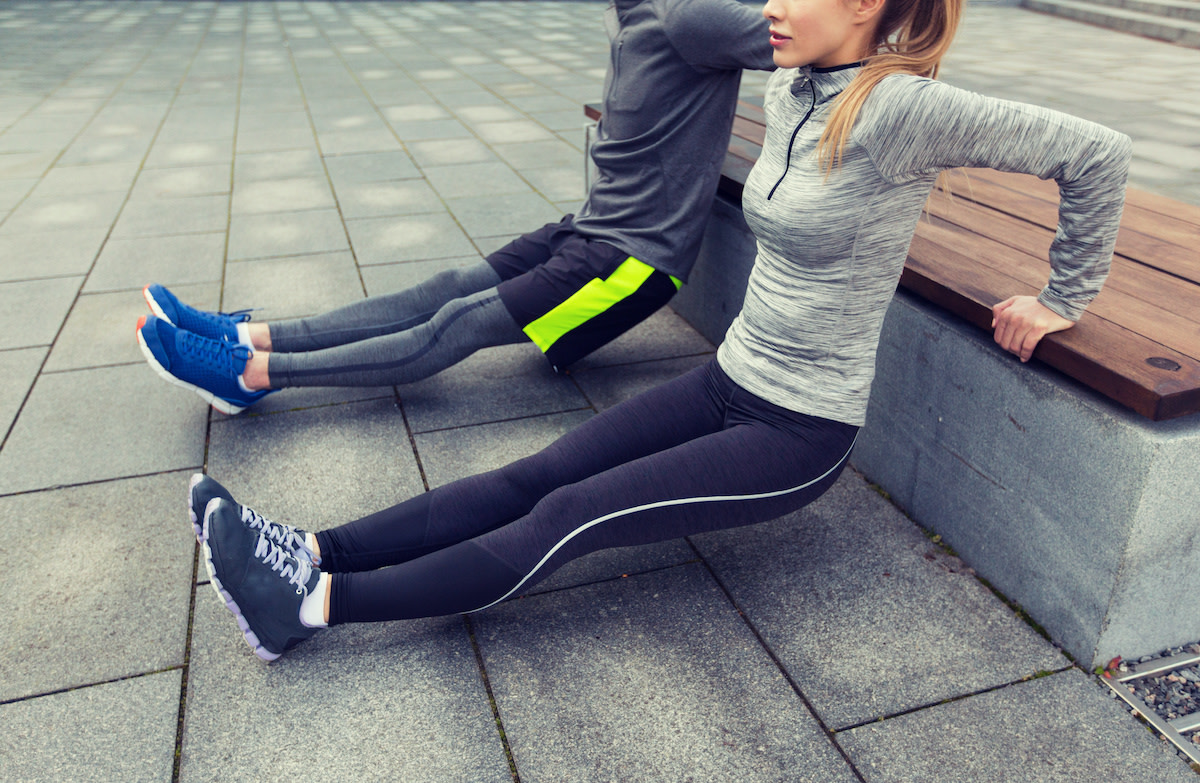Tricep Dips Exercise: How to Do Tricep Dips With Perfect Form
Written by MasterClass
Last updated: Nov 10, 2021 • 4 min read
If you’re looking for a versatile upper-body workout that targets your tricep muscles, consider practicing tricep dips.
Learn From the Best
What Are Tricep Dips?
Tricep dips are a bodyweight exercise designed to build strength in your arms, shoulders, and chest. They are also known as bench dips. They are considered one of the best exercises for building muscle in the triceps brachii (the muscle on the back of your arms). Perform tricep dips by sitting on a bench or elevated surface with your lower body extended to the floor in front of you. While placing your hands shoulder-width apart on the edge of the bench, slowly lower your body until your upper arm and forearm form a 90-degree angle.
3 Benefits of Doing Tricep Dips
The benefits of tricep dips extend to the entire body. Consider these reasons for incorporating tricep dips into your strength-training routine.
- 1. Tricep dips can help you build muscle in your upper body. Although tricep dips are primarily a triceps exercise, they also target the anterior deltoid muscles on the front of your shoulder and the pec muscles in your chest.
- 2. Tricep dips use your core as stabilizer muscles. With proper form, tricep dips are an effective exercise for enhancing your core stabilization. Keep your core activated throughout the full range of motion during your tricep dip exercises to reap this benefit.
- 3. You can perform tricep dips at home. The tricep dip is a great home workout. If you do not own a weight bench, you can perform tricep dips with a sturdy chair, a staircase, or another elevated surface.
How to Do Tricep Dips With Perfect Form
For tricep dips, begin with 2–3 sets of 10–15 repetitions. Choose your sets and repetitions based on your ability to maintain good technique throughout all sets and repetitions.
- 1. Sit on the edge of a bench with your hands beside your hips. Your palms should be on the bench with your fingers facing your hips.
- 2. Walk your feet forward until your hips are slightly ahead of the bench. Your legs can be bent or straight. Your shoulders should be over your wrist. Rotate your shoulders outward to engage your lats.
- 3. Your chin should remain tucked throughout the movement, as if you were holding an egg under your chin. Your pelvis should be slightly tucked and your ribs should be down. Pre-tension your shoulders and hips while engaging your core. All repetitions should begin from this starting position.
- 4. While maintaining your alignment, slowly bend your elbows and lower your hips toward the floor until your upper arms and forearms form 90-degree angles. Pause at the bottom of the movement.
- 5. To begin the upward movement, squeeze your triceps to begin straightening your elbows.
- 6. Finish the movement by squeezing your triceps while maintaining a slight bend in your elbows. Movement should only occur at your elbows.
- 7. Repeat for your desired number of repetitions.
3 Tricep Dip Variations
If you’re looking for a modified version of this exercise to suit your fitness level, consider these three bench dip variations.
- 1. Band-assisted dips: If you’re a beginner having trouble performing a full bodyweight tricep dip, try the band-assisted dip. Secure both ends of a resistance band to the bars on a dip station, dip bars, or other parallel bars. Rest your knees on the band as you lower yourself on the bars.
- 2. Weighted tricep dip: To perform this advanced variation, arrange two benches opposite each other. Sit on one bench and place your feet on the other. Before lowering yourself through the bench dip movement pattern, set a dumbbell, kettlebell, or weight plate on your lap.
- 3. Floor dips: If you don’t want to use an elevated surface for this exercise, try the floor dip variation. Practice floor dips by holding your body face up with your hands and feet on the floor or exercise mat—similar to the posture of a crab walk exercise. Lower your body to the floor and then extend your arms again.
How to Work Out Safely and Avoid Injury
If you have a previous or pre-existing health condition, consult your physician before beginning an exercise program. Proper exercise technique is essential to ensure the safety and effectiveness of an exercise program, but you may need to modify each exercise to attain optimal results based on your individual needs. Always select a weight that allows you to have full control of your body throughout the movement. When performing any exercise, pay close attention to your body, and stop immediately if you note pain or discomfort.
To see continual progress and build body strength, incorporate proper warm-ups, rest, and nutrition into your exercise program. Your results will ultimately be based on your ability to adequately recover from your workouts. Rest for 24 to 48 hours before training the same muscle groups to allow sufficient recovery.
Want to Dive Deeper Into Your Wellness Journey?
Throw on some athleisure, fire up a MasterClass Annual Membership, and get ready to sweat it out with exclusive instructional videos from Nike Master Trainer and GQ fitness specialist Joe Holder. Want to improve your cardiovascular endurance? Give Joe’s HIIT workout a go. Trying to get a little swole? He’s got a strength training workout for that. From fitness tips to nutrition hacks, Joe will have you feeling healthier in no time.
